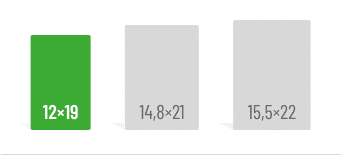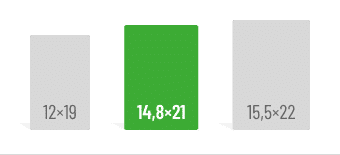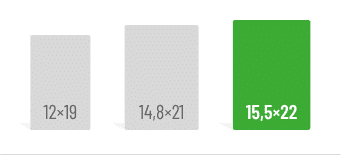First things first:
- Vester’s learning types are divided into auditory, visual, communicative and haptic
- Although Vester’s theory is debated, exploring different learning types can help you discover the best way for you to study.
We’re constantly learning throughout our lives—from learning the alphabet and basic math in elementary school to high school exams and, finally, university studies. Sometimes, learning can feel easy, while at other times, facts and concepts just don’t seem to stick. Many researchers and psychologists have looked into how we can learn most effectively. One of these was the German biochemist and systems scientist Frederic Vester.
In 1975, Vester developed the theory that all people belong to one of the following four learning categories: visual, auditory, communicative or haptic. In the meantime, there are also newer research approaches on this topic that are based on other learning models. However, all theories have one thing in common: every person learns differently. So if you want to learn as effectively as possible, it makes sense to take a closer look at your preferences. Here’s a closer look at Vester’s breakdown of learning types—perhaps one sounds like you?
The visual learner
Visual learners rely on seeing. Do you find learning easiest when you have images in front of you or when the material is visually organized? Then you might be a visual learner. People who favor this learning style understand information and concepts better when they can see them clearly.
Visual learners benefit from diagrams, charts, and mind maps. Highlighting key information in different colors and adding margin notes can also be helpful. Visually structuring the text in this way can make it easier for them to remember where certain information is located within a text.
This type benefits from developing a structured approach, organizing information into models that follow a specific logic. Writing summaries can also help to visualize information and connect ideas logically.
The auditory learner
For auditory learners, the focus is on listening. Do you find it easiest to learn when you hear the information in a recording or read it out loud to yourself? Then you could be an auditory learner. People who prefer this type of learning are particularly good at following oral explanations and listening over a longer period of time is also easy for them. Frontal teaching, for example, as it is often used in lectures, is particularly convenient for the auditory learning type.
There are various ways to obtain learning material by listening: podcasts, videos, audio books or recordings of lectures that some lecturers make available. However, as mentioned above, it also helps to read the learning material aloud to yourself. In principle, however, it is important to ensure that auditory learners benefit from a quiet environment – loud music and other background noise can quickly be distracting.
The communicative learner
The communicative learning type focuses on communication with others. This type is often referred to as cognitive or abstract-verbal. Do you learn best when you go through the material with fellow students? Then you could be a communicative learner. People who prefer this type of learning first acquire the learning material visually or auditorily, but need to discuss it with others to retain it fully.
For this type of learner, working in (small) learning groups is particularly beneficial, in which the learning material is gone through and discussed together. Through discussions and conversations about the material, it is easier for this type of learner to process information and store it for a longer period of time. Learning groups in which the learning material is discussed from different perspectives are particularly suitable here.
Communicative learners can also study independently by simulating conversations. They can take on different roles in a group discussion, an interview, or another learning scenario, which helps them view the topic from various angles.
The haptic learner
For haptic learners, learning by doing is essential. This type is also often referred to as the kinesthetic, tactile, or motor learner. Do you find learning easiest when you apply information and try things out directly? Then you could be a haptic learner. People who prefer this type of learning find it easier to acquire knowledge in the long term if they can apply and test it themselves in practice.
On the other hand, theoretical, lecture-heavy classes can be challenging for haptic learners. Practical exercises, work in the laboratory and dealing with models help to absorb learning material. Other examples can be working with experiment kits and machines or learning a new foreign language in a conversation-based language course or at meetings with native speakers (many universities arrange so-called “language tandems”).
Since not every learning material has a practical level, other approaches can help to acquire theoretical knowledge anyway. For example, moving around while studying or associating gestures with certain concepts can make it easier to recall information during exams.
While reading about the different learning types, you may have noticed some overlap. One of the main criticisms of Frederic Vester’s four learning types is that the lines between the categories aren’t always clear-cut. Most people benefit from a combination of learning strategies. This article aims to inspire you to explore different ways of learning and apply them when preparing for your next exam. Finding out how you learn best also means learning more effectively—and that makes exam season much easier to handle.
The GRINspiration team wishes you great success in your next exam!
Sources:
- 4 Lerntypen nach Vester (Übersicht) Lerntypentest
- Cress, Ulrıke. „Lernorientierungen, Lernstile, Lerntypen und kognitive Stile.“ Handbuch Lernstrategien (2006): 365-377.
- Looß, M. (2001). Lerntypen?: Ein pädagogisches Konstrukt auf dem Prüfstand (2001).
Do you like our magazine?
Then sign up for our newsletter now!







